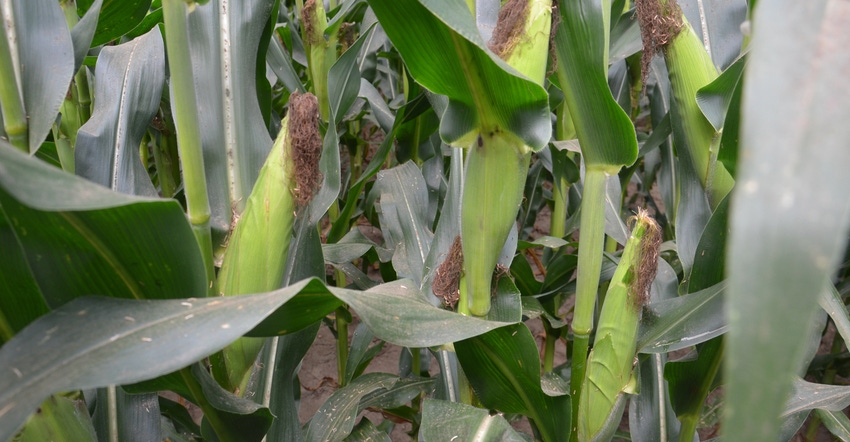October 24, 2018

The 2018 season will be remembered as a hot one. But it will also be remembered as a record or near-record year for corn yields in some areas. How can that be? The answer is just one of many lessons farmers learned in 2018.
Timing of high temperatures is important. That’s the answer! Indianapolis had twice the number of 90-degree-F or higher days than normal, but if heat didn’t come right after pollination and you had sufficient moisture, it didn’t seem to affect yields. However, there was tip dieback in fields where it got hot during pollination.
In a good growing year, corn can run out of nitrogen. I saw signs of nitrogen deficiency during grain fill. Yields still ranged from 230 to 254 bushels per acre where I made those observations. Not everyone enjoyed such high yields.
I also noticed some sulfur deficiency. If you’re going to shoot for even higher yields, what can you do to supply sufficient nutrients? Is that going to be cost-effective?
More weather lessons
After watching the weather, crops and yields this year, I have a new slogan: “Rains make grains.” Too much rain at the wrong time isn’t good. One of my friends, Marshall Alford, who farms in Dearborn County in southeastern Indiana, received 37.13 inches of rain from May through September and expected his best crops ever. However, if you happened to plant hybrids with tight husk covers and the ears didn’t drop down, as happened on some farms, you may have found diplodia and gibberella ear rots.
One grower told me he wants to be more proactive about applying foliar fungicides. I agree. It’s virtually impossible to breed for resistance to all disease organisms. Plant breeders can keep selecting for more disease resistance, but they can’t achieve immunity.
Pathogens have breeding programs of their own. They mutate and come up with new biotypes or races faster than breeders can turn crop breeding cycles around. During my crop breeding years, at first we started to go to winter nurseries and get two breeding generations per year. Later, we built greenhouses and got three to four breeding cycles per year. However, before we can develop resistance to all economically important diseases, new disease such as tar spot and physoderma pop up from almost nowhere. That happened this year, too.
2018 takeaways
Corn will do what it can to survive, even if you run over it, hail on it, dump chemicals on it or flood it. Corn still tries to survive and produce progeny.
We learned this year that you can have aspergillus mold even in a wet year if the microenvironment is right. You can have gray leaf spot and northern corn leaf blight at the same time, even though I’m still scratching my head over that one. It must be because the second half of July went cool. It also explains how corn overcame heat, and yields went way up. When heat comes matters.
Another lesson was reinforced this year: There are big differences in corn hybrids, if you know what you’re looking for.
Remember this: When you think you’ve it figured out, Mother Nature will prove you wrong. If you keep your eyes, ears and mind open, learning never stops.
Nanda is president of Agronomic Crops Consultants LLC. Email him at [email protected] or call 317-910-9876.
About the Author(s)
You May Also Like






